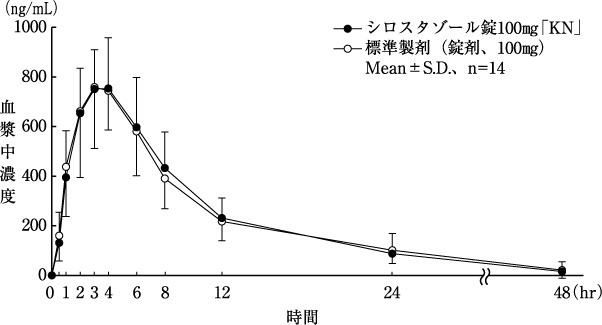シロスタゾール

シロスタゾールで脈が上がる(頻脈になる)のは、主に心筋への刺激作用と血管拡張による反射性頻脈が原因です。
以下に詳しく解説します:
シロスタゾールの作用機序と頻脈の関係
シロスタゾールはホスホジエステラーゼⅢ(PDEⅢ)阻害薬で、以下のような作用を持ちます:
cAMP(サイクリックAMP)濃度を上昇させることで、
血小板凝集を抑制(抗血小板作用)
血管平滑筋を弛緩させて血管を拡張(血管拡張作用)
心筋の収縮力を増強(陽性変力作用)
このうち、心筋への作用と血管拡張作用が頻脈の主な原因とされています。
頻脈が起こるメカニズム
心筋刺激による直接的な心拍数増加
PDEⅢは心筋にも存在し、これを阻害することで心筋の収縮力が増し、心拍数が上昇します。
血管拡張による反射性頻脈
血管が拡張すると血圧が一時的に低下します。
これに対して体は交感神経を活性化し、心拍数を上げて血圧を維持しようとします(反射性頻脈)。
副作用としての頻脈・動悸
臨床報告では、頻脈や動悸は比較的よく見られる副作用であり、特に高齢者や心疾患のある患者では注意が必要です。
⚠️ 注意点と対策
心不全や狭心症のある患者では禁忌または慎重投与とされており、心拍数増加が症状を悪化させる可能性があります。
頻脈が持続する場合や症状が強い場合は、減量や中止を検討する必要があります。
バイタルサインのモニタリングが重要であり、特に投与初期は注意が必要です。
参考文献
cGMP stimulates renin secretion in vivo by inhibiting phosphodiesterase-3
Abstract
The interaction between renin, nitric oxide (NO), and its second messenger cGMP is controversial. cAMP is the stimulatory second messenger for renin but is degraded by phosphodiesterases (PDEs). We previously reported that increasing endogenous cGMP in rats by inhibiting its breakdown by PDE-5 stimulated renin secretion rate (RSR). This could be reversed by selective inhibition of neuronal nitric oxide synthase (nNOS). PDE-3 metabolizes cAMP, but this can be inhibited by cGMP, suggesting that renal cGMP could stimulate RSR by diminishing PDE-3 degradation of cAMP. Rats were anesthetized with Inactin before determination of blood pressure (BP), renal blood flow (RBF), and sampling of renal venous and arterial blood to determine RSR. In 13 rats, basal BP was 104 +/- 2 mmHg, RBF was 6.1 ml x min(-1) x g kidney wt(-1) and RSR was 2.9 +/- 1.4 ng ANG I x h(-1) x min(-1). Inhibiting PDE-5 with 20 mg/kg body wt i.p. Zaprinast did not change hemodynamic parameters but increased RSR fivefold to 12.2 +/- 4.9 ng ANG I x h(-1) x min(-1) (P < 0.05). Renal venous cAMP was increased by Zaprinast from 93.8 +/- 27.9 to 149.2 +/- 36.0 pM x min(-1) x g kidney wt(-1) (P < 0.05). When another 10 rats were treated with the PDE-3 inhibitor Milrinone (0.4 microg/min over 30 min, which did not affect hemodynamics), RSR was elevated to 10.4 +/- 4.4 ng ANG I x h(-1) x min(-1). Milrinone also increased renal venous cAMP from 212 +/- 29 to 304 +/- 29 pM x min(-1) x g kidney wt(-1) (P < 0.025). Administration of Zaprinast to rats pretreated with Milrinone (n = 10) did not further increase in RSR (7.5 +/- 3.3 ng ANG I x h(-1) x min(-1)). These results are consistent with endogenous renal cGMP inhibiting PDE-3, which diminishes renal metabolism of cAMP. The resulting increase in cAMP serves as an endogenous stimulus for renin secretion. This suggests a pathway by which NO can indirectly stimulate RSR through its second messenger cGMP.





